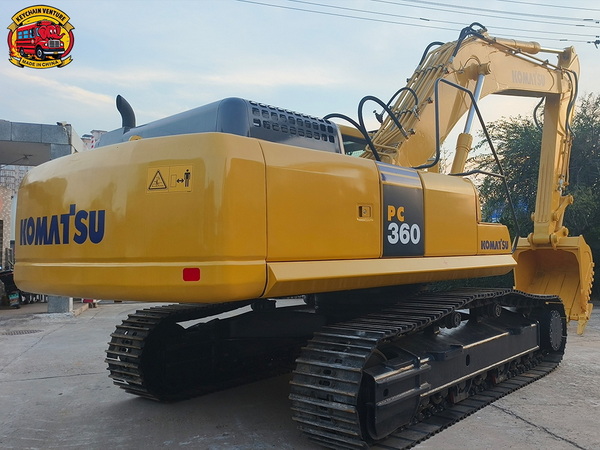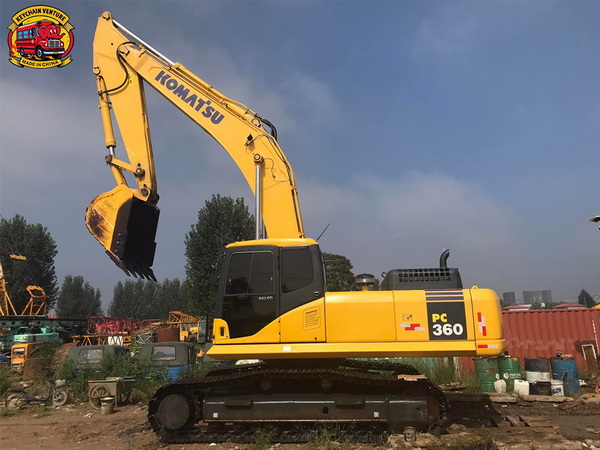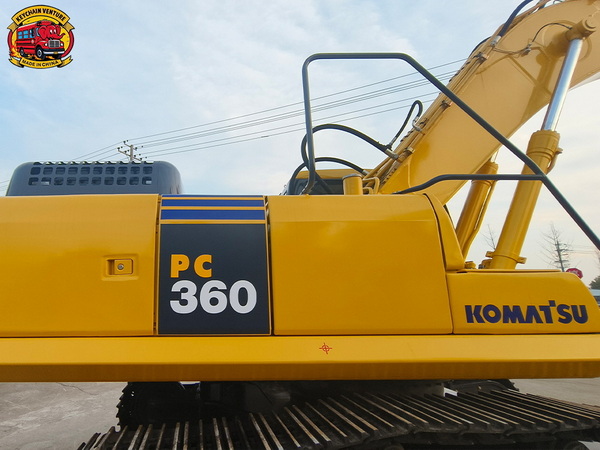Views: 222 Author: Amanda Publish Time: 2025-11-13 Origin: Site








Content Menu
● Why Consider a Used Excavator?
● Understanding Key Specifications
● Step-by-Step Inspection Checklist
>> Exterior and Structural Integrity
>> Undercarriage and Mobility Components
>> Hydraulic System Assessment
>> Engine and Electrical System
>> Attachments and Accessories
>> Operator Cab and Safety Systems
>> Documentation and Operating History
● Evaluating Machine Age and Usage Patterns
● Brand Reliability and Residual Value
● Reviewing Maintenance Records
● Budgeting Beyond Purchase Price
● Negotiating Price and Checking Market Value
● Warranty and After-Sale Support
● Preparing for Future Upgrades
● Professional Assessment and Final Checks
● Frequently Asked Questions (FAQ)
>> 1. How often should a used excavator be serviced?
>> 2. Can I get a warranty for my used excavator?
>> 3. Why is the hour meter important when buying used?
>> 4. Is operating history really critical?
>> 5. What should I do before finalizing a purchase?
Purchasing a used excavator is more than a simple financial transaction—it's a strategic choice that can redefine project success for construction companies, contractors, and business owners alike. With careful research and systematic inspection, buyers can unlock significant value, benefit from robust machinery at lower costs, and position themselves competitively in their fields. This guide delivers an exhaustive exploration of the Used Excavator buying process, emphasizing what to inspect, how to verify reliability, and the steps needed to mitigate risks.[3][5]

Used excavators are attractive because they offer substantial budget savings and immediate availability compared to new models. For companies watching cash flow or needing equipment on short notice, the used market provides access to leading brands without the waiting period or depreciation that comes with factory-fresh machinery.[2][8]
- Significant cost reduction over new purchases.
- Access to proven models with solid track records.
- Reduced lead time and faster deployment.
- Potential for acquiring multiple units for fleet expansion.
In addition to savings, many used excavators come from reputable dealers and are accompanied by comprehensive service records, ensuring buyers make informed and reliable choices.[2]
A trusted seller is foundational to a positive used excavator purchase. Buyers should favor established dealerships, respected auction houses, or online sellers with solid reputations and transparent business practices.[5]
- Dealers often provide verified maintenance histories and offer warranties.
- Reliable sellers allow on-site inspections or test drives.
- Avoiding unknown third-party brokers helps sidestep risks associated with hidden damage, incomplete records, or questionable provenance.
Checking reviews, testimonials, and industry credentials adds an extra layer of security to the buying journey.[5]
Before visiting sellers or evaluating machines, it's essential to know your project requirements. Matching the right used excavator with your workload depends on a few vital specifications:[6]
- Engine power and fuel efficiency
- Hydraulic capability and digging depth
- Operating weight and lifting capacity
- Bucket size and attachment compatibility
- Arm length and swing speed
The correct specifications ensure the used excavator meets the scale and nature of intended work, minimizing the risk of breakdowns or underperformance.[6]
A thorough inspection separates quality used excavators from problematic buys. Here's a comprehensive checklist for evaluating any used excavator:[7][3][2][5]
- Check the body and frame for dents, cracks, and previous repairs; excessive use and rough treatment leave visible signs.
- Inspect the boom, arm, and bucket for warping, bending, or welding work that could suggest structural weakness.
- Analyze the paint—fresh layers sometimes hide corrosion or damage.
- Look for rust, especially along joints and moving parts.
- Evaluate tracks for wear, proper tension, and alignment; loose or badly worn tracks must be replaced.[6]
- Inspect rollers, sprockets, idlers, and bushings for unusual pitting, cracks, or signs of neglect.
- Track bolts and shoes should be secure and undamaged.
- Survey all hydraulic lines, hoses, cylinders, and seals for leaks, bulges, or cracks.[11]
- Test hydraulic pressure and response during operational checks; sluggish or uneven performance points toward pump or valve problems.
- Inspect hydraulic fluid level and quality—the presence of contamination suggests internal wear.[5]
- Look for oil, coolant, or fuel leaks in the engine compartment.
- Check battery health, wiring, and terminals for corrosion or loose connections.[12]
- Test all cockpit lights, gauges, and switches for functionality.
- Listen to the engine on startup and during operation; knocks, whines, or grinding sounds may indicate lurking problems.
- Scrutinize buckets, augers, grapples, and other attachments for visible wear, rust, or failing welds.
- Inspect connection points and couplers for tightness and proper operation.
- Test auxiliary hydraulic functions if equipped.
- Ensure controls, seatbelts, emergency shutoffs, and safety alarms work flawlessly.[5]
- Inspect the operator's seat, floor, windows, and visibility.
- Carefully review service and maintenance records; these are the backbone of reliable used excavator purchases.[9][2]
- Compare hour meter readings with usage history and seller claims—mismatches may mask excessive use or undocumented repairs.
- Check unit serial numbers, year, model, and all paperwork for accuracy and legitimacy.
- Take the used excavator for a test drive, evaluating digging, lifting, swinging, and traveling motions.[10]
- Notice any unusual vibrations, noises, or delays in response.

Not all used excavators have endured the same workloads. An excavator used for heavy excavation or mining will show more rapid wear than one used intermittently for landscaping or utility work.[2]
- Compare age and operating hours with typical lifecycle estimates for the model.
- Ask about work environments—machines exposed to extreme conditions often deteriorate faster.
- Assess the frequency and nature of past repairs.
Some brands are renowned for superior reliability and easier access to parts and service support. Choose used excavators from reputable manufacturers—such as Caterpillar, Komatsu, Kubota, Hitachi, and Volvo—whose units retain higher residual values.[2]
- Brands with good market reputations experience lower depreciation and more stable resale prices.
- Reliable brands simplify future repairs and enhance long-term operational safety.
Comprehensive maintenance records are essential in the used excavator buying process:[9]
- Records should note regular servicing, repairs, replacement of major components, and responsible ownership.
- Monthly or scheduled maintenance reveals a pattern of care, making future issues easier to predict and address.
Shortcomings in documentation, or records highlighting frequent repairs, are warning signs.
It's wise to consider expenses beyond the initial purchase of a used excavator, as future costs have long-term impact:
- Transport and delivery fees depending on geography and jobsite location.[6]
- Registration, insurance, and licensing requirements.
- Potential costs for replacement parts, especially for older or less common models.[13][2]
- Ongoing maintenance, repairs, consumables (filters, fluids, etc.).
- Retrofitting or upgrades to meet new regulations or specific project needs.
Researching market values and comparing prices among sellers help buyers avoid overpaying for used excavators. Online resources, auction listings, and dealership inventories provide benchmarks. Be prepared to negotiate, citing:[2][5]
- Visible wear and tear.
- Age and hours logged.
- Maintenance record quality.
- Market demand and regional pricing variations.[6]
Reputable sellers may offer limited warranties or service support on used excavators. Always examine the coverage details—duration, scope, and exclusions. Written guarantees build buyer confidence and aid with post-sale issues.[14][2][6]
A used excavator today may need retrofits or technology upgrades in the future. When shopping, consider:
- Availability of advanced attachments or control systems for older models.
- Ease of upgrading cab, visibility, safety, and productivity features.
Before finalizing any purchase, consider engaging a professional heavy equipment mechanic for an impartial evaluation. Such an expert may discover overlooked flaws or maintenance gaps, helping you avoid expensive mistakes. Take detailed photos and video documentation for reference and negotiation support.
Buying a used excavator requires comprehensive knowledge, patience, and methodical evaluation. By examining every aspect—seller reliability, mechanical integrity, service history, documentation, and specifications—buyers greatly minimize future risk and secure a powerful machine for their business needs. Used excavators offer proven value, immediate availability, and robust performance when purchased wisely. Safeguard your investment through deep due diligence, professional assessment, and careful planning.

Routine maintenance is essential for optimal performance. Follow manufacturer schedules, but increase inspection frequency if signs of wear, leaks, or abnormal engine behavior are present.[9]
Many dealers offer limited, documented warranties covering certain components. Always verify warranty terms and the seller's post-sale support options.[14][6]
The hour meter tracks equipment usage and helps estimate remaining service life. Ensure it's functional and matches service records to uncover possible tampering.[5]
Yes. Machines used in harsh environments or for demanding jobs will naturally show more wear. Assessing past workloads helps predict potential issues and maintenance needs.[3][2]
Always conduct a detailed inspection, review records, test the machine, and—when possible—secure a mechanic's evaluation. These steps dramatically reduce risk and assure lasting business value.[2][5][6]
[1](https://www.canrod.com/article/planning-to-buy-used-excavator-ultimate-checklist)
[2](https://rhinox-group.us/blogs/guides-and-tips/buying-a-used-excavator-tips-inspection-guide)
[3](https://www.linkedin.com/pulse/complete-guide-buying-used-excavator-insider-tips)
[4](https://www.mechandlink.com/bn/news-article/The-Allure-of-Used-Excavators-A-Comprehensive-Guide)
[5](https://blog.wagnerusedequipment.com/used-excavator-guide/)
[6](https://www.centralauctiongroup.com/used-excavator-guide/)
[7](https://www.purchasing.com/construction-equipment/excavators/buying-used-considerations/index.html)
[8](https://www.conservmachinery.com/blog/5-key-factors-to-consider-when-purchasing-used-excavators)
[9](https://heavyvehicleinspection.com/blog/post/used-equipment-buying-guide-maintenance-records)
[10](https://www.yanceybros.com/blog/the-complete-guide-to-buying-an-excavator/)
[11](https://hixenmachine.com/most-common-hydraulic-problems-in-used-excavators/)
[12](https://safetyculture.com/checklists/excavator-inspection)
[13](https://www.reddit.com/r/heavyequipment/comments/18sx8ym/buying_guide/)
[14](https://quipli.com/resources/what-to-look-for-when-buying-an-excavator/)